Rijst
U kunt de resultaten van dit gewas bekijken met en zonder het gebruik van GEN200.
Toepassing van GEN200 resulteerde in 30% tot 40% rendementsverbetering van rijst met kwaliteitstoename en vermindering van schade door insecten of ziekten.
GEN200 Rijst applicatie schema voor 500 ha
|
Sr.Nr.
|
Groeifase
|
Hoeveelheid
|
Verdunning
|
|
1
|
Uitloopfase
(20-25 DAT)
|
250 liters
|
250000
(1000 keer)
|
|
2
|
Voortplantingsfase
(45-50 DAT)
|
250 liters
|
250000
(1000 keer)
|
|
3
|
Graan ontwikkelingsfase
(70-75 DAT)
|
250 liters
|
250000
(1000 keer)
|
|
Totaal
|
750 liters
|
|
Let op:
- Controleer de compatibiliteit voordat u met een ander product vermengd.
- Indien slechts twee toepassingen mogelijk zijn, dan zijn de twee eerste toepassingen zeer noodzakelijk voor het duidelijke verschil in opbrengst.
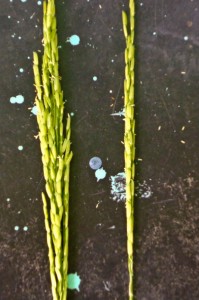
Rijst met GEN200 (links)
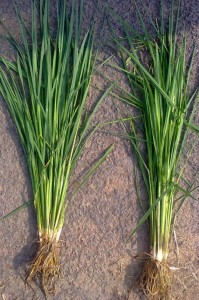
Rijst met GEN200 (links)
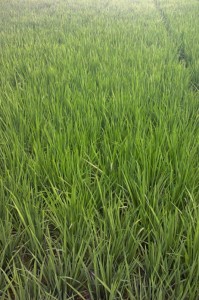
Rijst met GEN200
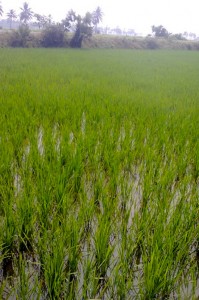
Rijst zonder GEN200
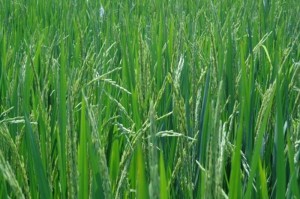
Rijst met GEN200
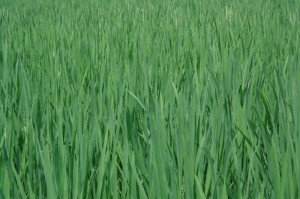
Rijst zonder GEN200
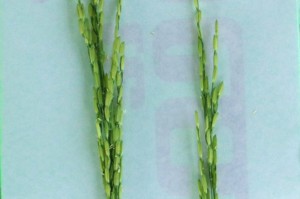
Rijst met GEN200 (links)
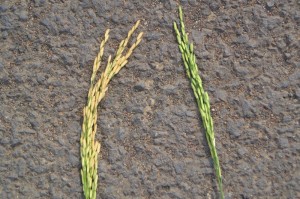
Rijst met GEN200 (links)
Calcium silicate sources can be used successfully in the integrated management of brown spot and panicle blast in flood-irrigated areas of tropical lowland regions. Depending upon the source and dose of Si fertilizer applied to Sideficient soils, the severity and incidence of these diseases can be reduced and the yield increase.
Depletion of the stratospheric ozone layer due to the emission of chlorofluorocarbons and other trace gases has resulted in increased solar ultraviolet-B radiation on the earth’s surface, which would reduce above ground biomass and plant height, and increased DNA damage, and the effects of UV-B radiation on plants showed that they responded similarly in Arctic, Antarctic and lower latitudes. Thus, there is an urgent need to find out effective ways to alleviate such damages on plant growth and development.
This study investigated the role of silicon (Si) and manganese (Mn) rates on the activity of peroxidases (POX), polyphenoloxidases (PPO) and phenylalanine ammonia-lyases (PAL) on rice plants non-inoculated and inoculated with Bipolaris orzyae.

Rice (Oryza sativa L.) is a typical Si-accumulating plant and is able to accumulate Si up to >10 % of shoot dry weight. The cell wall has been reported to become thicker under Si-deficient condition. To clarify the relationship between Si accumulation and cell wall components, the physical properties of, and macromolecular components and Si content in, the pectic, hemicellulosic, and cellulosic fractions prepared from rice seedlings grown in hydroponics with or without 1.5 mM silicic acid were analyzed. In the absence of Si (the -Si condition), leaf
blades drooped, but physical properties were enhanced. Sugar content in the cellulosic fraction and lignin content in the total cell wall increased under -Si condition. After histochemical staining, there was an increase in cellulose deposition in short cells and the cell layer just beneath the epidermis in the -Si condition, but no significant change in the pattern of lignin deposition. Expression of the genes involved in secondary cell wall synthesis, OsCesA4, OsCesA7, OsPAL, OsCCR1 and OsCAD6 was up-regulated under -Si condition, but expression of OsCesA1, involved in primary cell wall synthesis, did not increase. These results suggest that an increase in secondary cell wall components occurs in rice leaves to compensate for Si
deficiency.














 English
English Nederlands
Nederlands Deutsch
Deutsch Español
Español Français
Français Italiano
Italiano